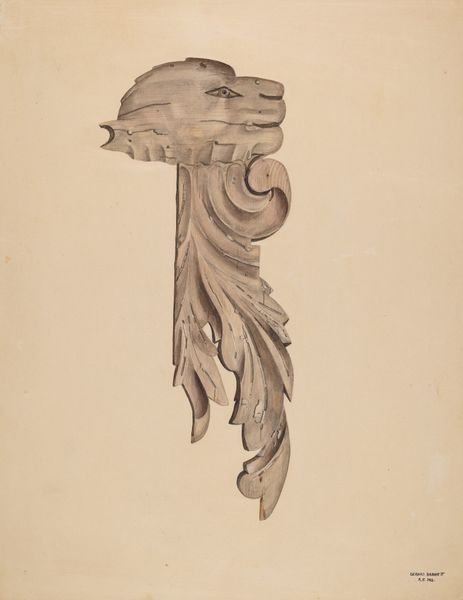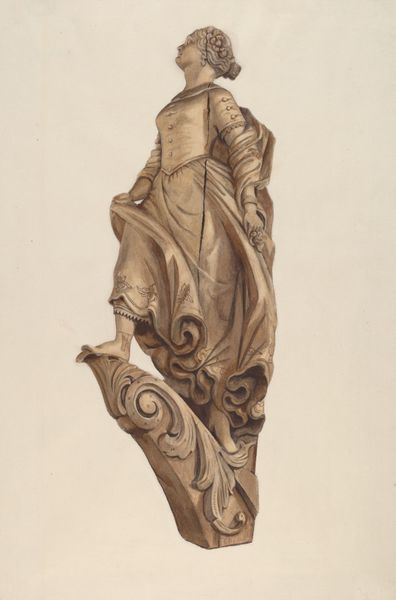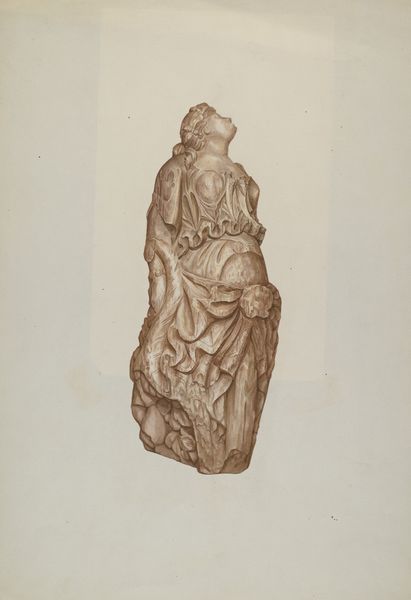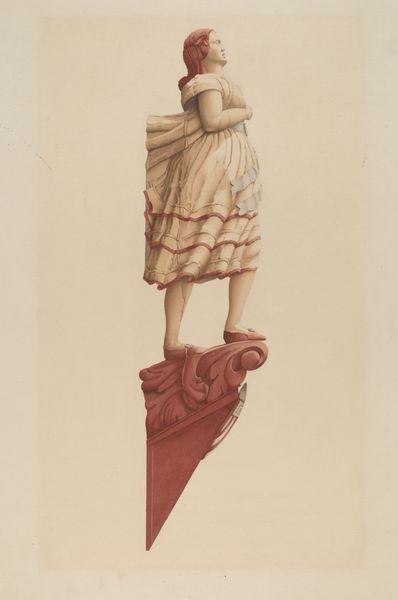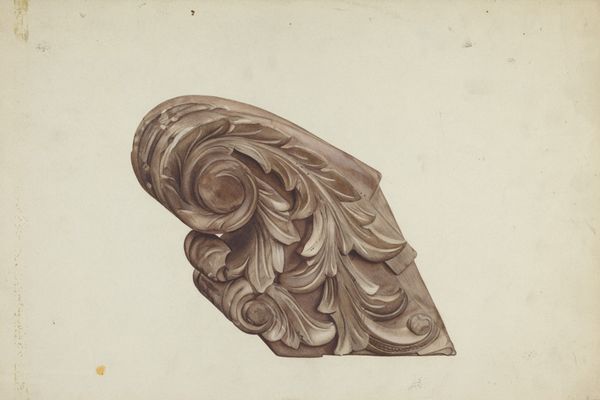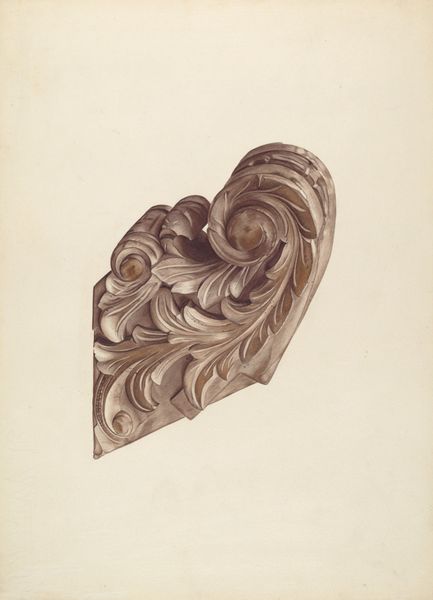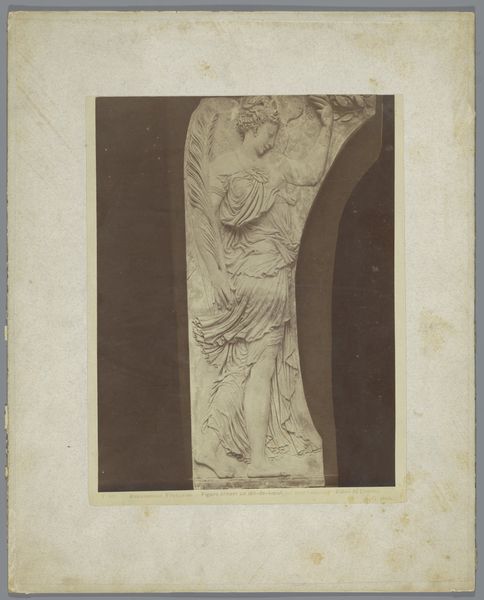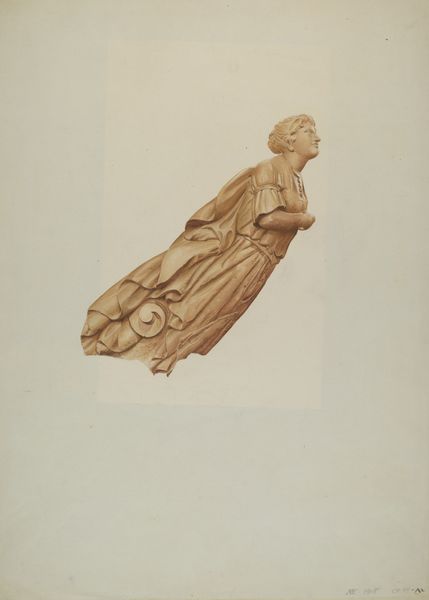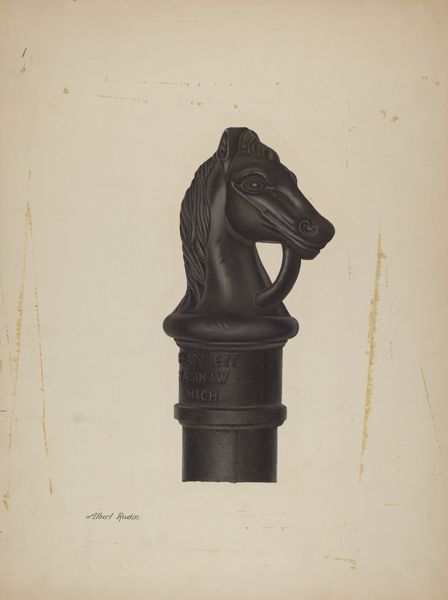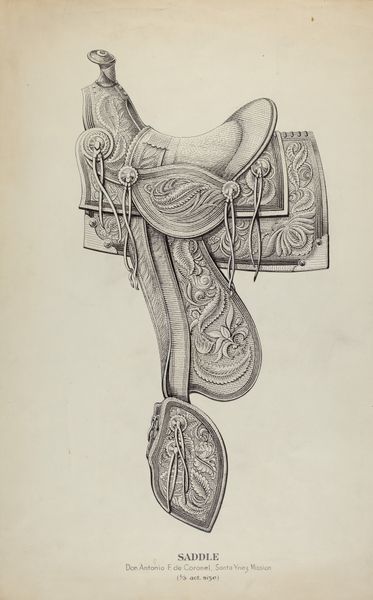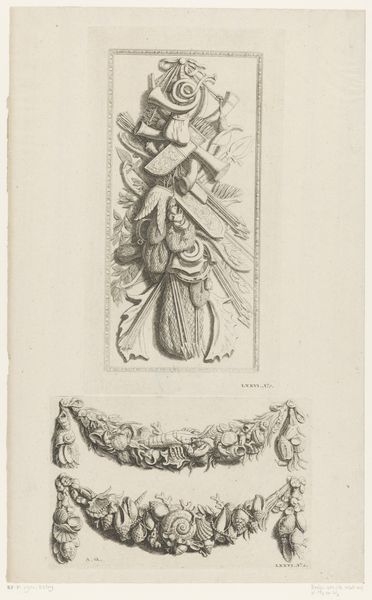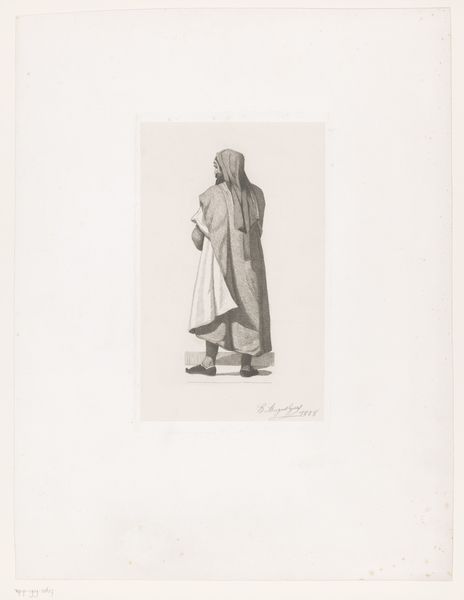
drawing, carving, pencil, wood
#
pencil drawn
#
drawing
#
carving
#
pencil drawing
#
pencil
#
wood
#
academic-art
#
watercolor
#
realism
Dimensions: overall: 42 x 30.3 cm (16 9/16 x 11 15/16 in.) Original IAD Object: 18 1/2" long
Copyright: National Gallery of Art: CC0 1.0
Editor: Here we have Willard Hazen’s *Ship's Billethead* from around 1939, a drawing in pencil and maybe watercolor, depicting what looks like a carved wooden ornament. The precision is incredible, like a blueprint but also a celebration of craft. What’s your take on it? Curator: What immediately strikes me is its relationship to architectural drawing traditions and its connection to American maritime history. Hazen meticulously documented this billethead, not just as an object, but as a cultural artifact. What purpose might this level of detail have served, do you think? Editor: Preservation? It feels like he wanted to immortalize a disappearing craft, or perhaps provide a guide for future artisans. Curator: Precisely. In the context of the 1930s, with the decline of shipbuilding due to industrialization and economic depression, this drawing becomes a poignant act of cultural preservation. It positions maritime craft within the national narrative. What choices by the artist enhance this feeling? Editor: The stark realism and academic style give it an air of authority, almost scientific observation. He’s not romanticizing; he's recording. Curator: Right. It also reflects the growing interest of institutions like museums to catalogue elements of traditional crafts in risk of being lost to modernization, and to create resources accessible for education or later reinterpretation. Do you see ways its purpose is manifested in the materiality? Editor: It’s just pencil and maybe watercolour on paper. It’s practical, cheap, like a field notebook. It speaks to its intent to educate, as well as memorialize, for everyone. Curator: Exactly, the materials are practical, accessible, and contribute to the overall effect. It gives a kind of “democratized” value of artwork from trades, unlike academic painting from previous eras that may seem overly elevated and formal in approach. Editor: I didn't consider the socio-political element before. Now it feels more significant, an act of artistic recording deeply embedded in the context of its time. Thanks! Curator: It’s been great sharing some observations, especially how art engages with and interprets society.
Comments
No comments
Be the first to comment and join the conversation on the ultimate creative platform.

